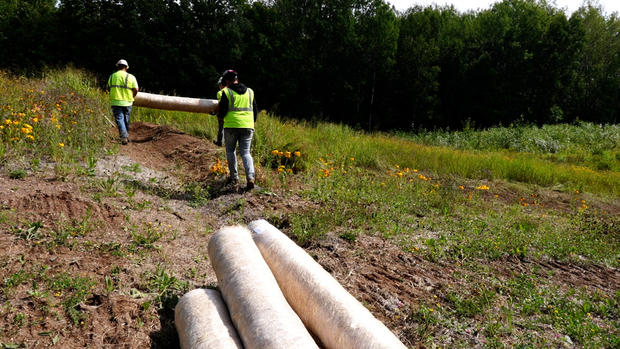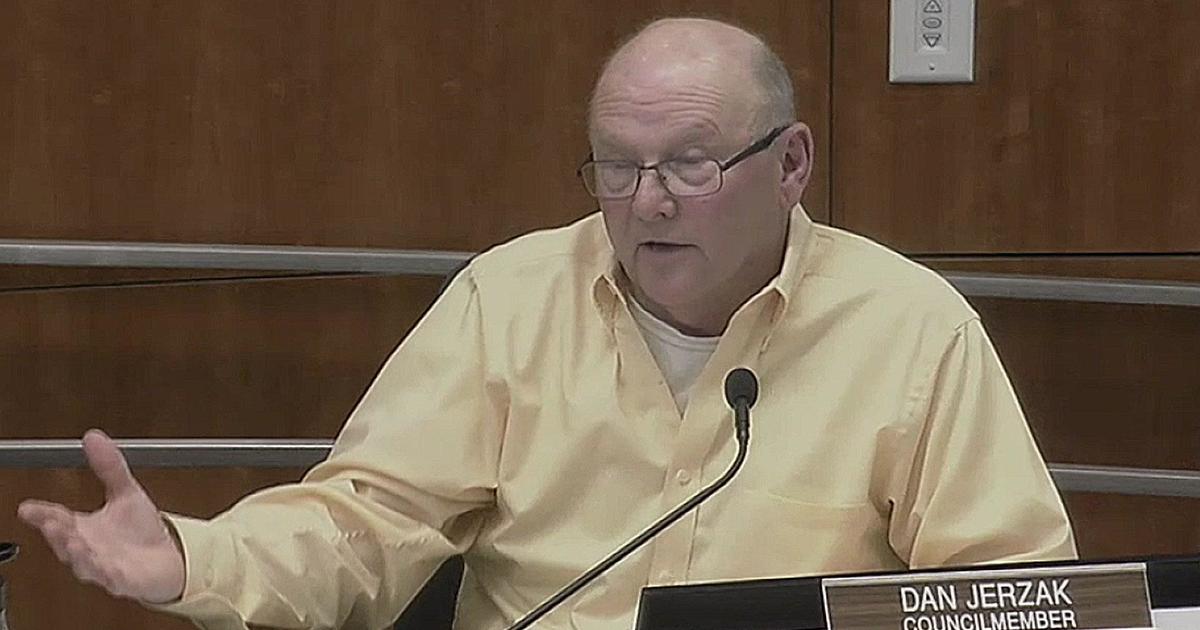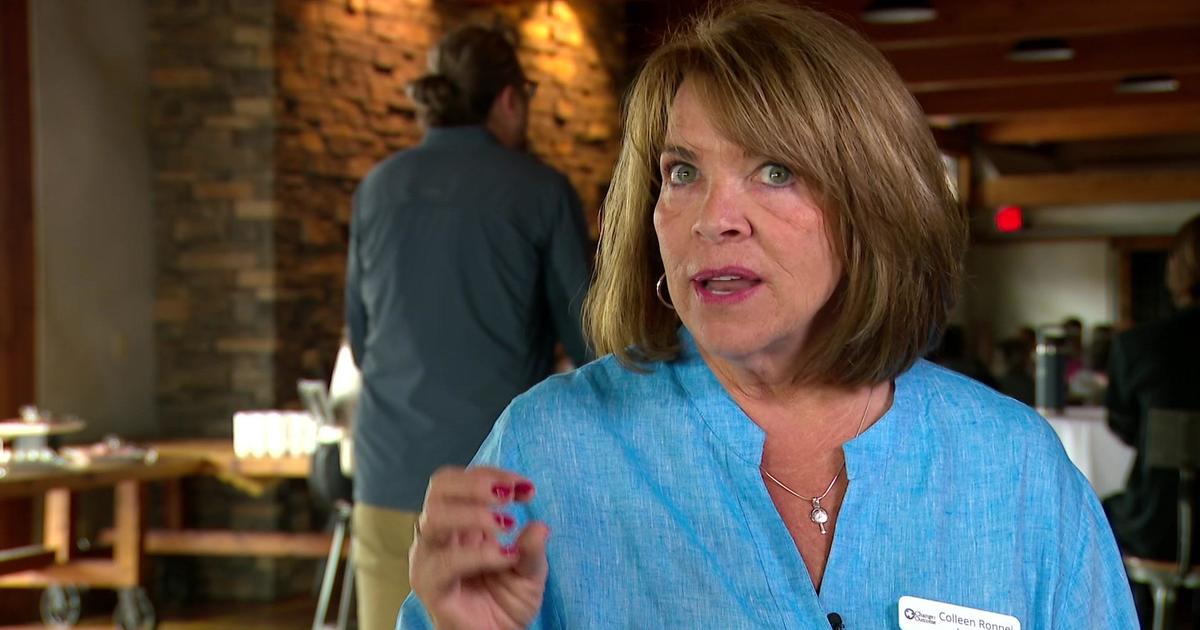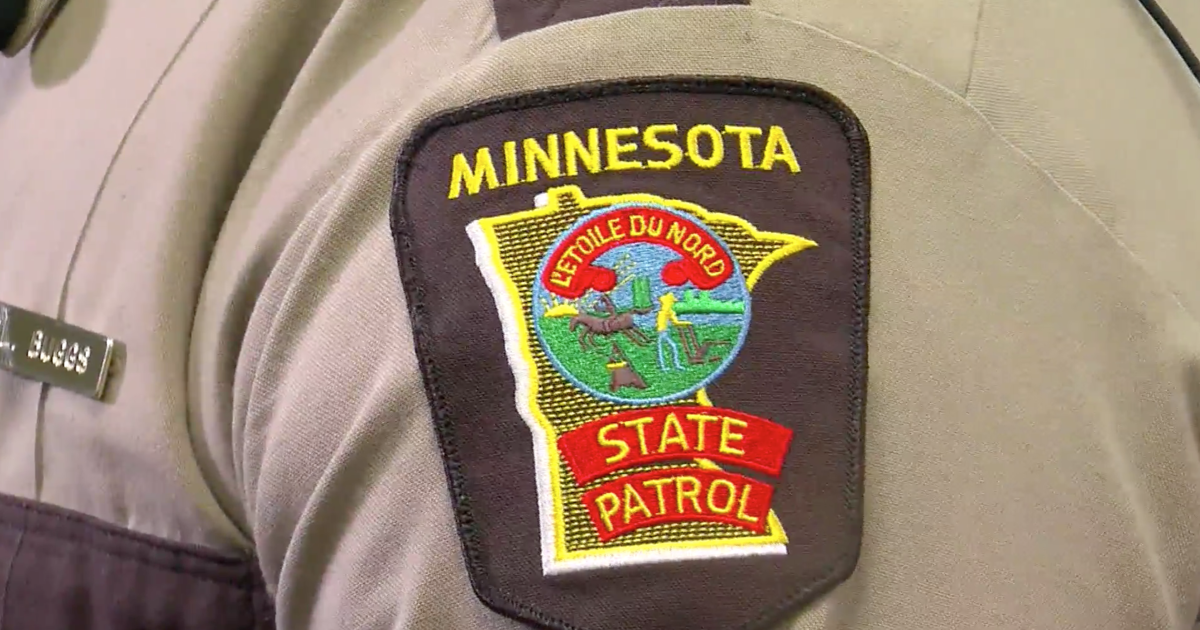Line 3 oil pipeline: A look at what's happened since the pipeline started operating in northern Minnesota
MINNEAPOLIS -- It's been over a year since the controversial Line 3 pipeline started operating in Minnesota.
The pipeline - one of dozens owned by Canadian energy giant Enbridge - is at the center of a debate surrounding environmental regulation, Indigenous rights, and access to jobs. After years of protests and legal battles, the pipeline turned on in October of 2021.
Federal regulators say the company has spilled hazardous liquids hundreds of times in the last 20 years. That's wreaked havoc on portions of the environment in Minnesota and other areas of the U.S. And though Enbridge has provided a lot of people in northern Minnesota with jobs, those positions are now drying up.
A complex history
First built in the 1960s, Line 3 starts in Alberta, Canada, and comes to a stop in Superior, Wisconsin. It runs through land which, in the 1800s, was ceded by Indigenous groups to the U.S. under the condition that they're guaranteed the right to hunt, fish, and gather wild rice. Activists say the pipeline infringes on those rights.
The old Line 3 was also the site of the biggest inland oil spill in US history; it ruptured near Grand Rapids, Minnesota in 1991 and spilled oil into the Prairie River, which is a tributary of the Mississippi.
Over the years, the pipeline aged and slowed down, so in the 2010s, Enbridge contemplated replacing the pipeline and expanding its width so it could maximize its use. Now, 760,000 barrels of oil run through it every day, which is double what it used to be. Enbridge argues replacing this corroding pipe has made it safer for the environment and will require less maintenance, long-term.
What's running through this pipeline now comes from Canadian tar sands. It's thick like molasses and environmental advocacy groups say that if it spills, it's difficult and hazardous to clean. The spilled oil can solidify and sink into wetlands, where it can have toxic effects on wildlife, and it also - according to critics - emits the most greenhouse gasses of any type of oil produced in the world throughout its lifetime.
This replacement pipeline was actually rerouted so it goes through a different path to mostly cut around reservations, but it still weaves through 200 river crossings, eight state forests, and the Mississippi river's headwaters.
Enbridge calls the new pipeline Line 93 while it decommissions and monitors the old one. And it says it transports greater than 99.999% of its oil safely. But activists said it was still a risk, so they pushed back, which is part of the reason why the Minnesota portion of the pipeline was delayed for years.
The heart of the legal battle surrounded a decision made by the Minnesota Public Utilities Commission, which agreed with Enbridge that replacing the pipe would be safer, in the long-term, and that Minnesotans would still be relying on oil in the decades to come.
Enbridge argues the state permitted the company to finish the pipeline because it has been working to protect wetlands, waterbodies, and sacred wild rice beds for 70 years
After a court decision in Enbridge's favor in 2021, the Minnesota Department of Natural Resources started issuing licenses for the pipeline to cross public waters, build on wetlands, and eventually allowed Enbridge 5 billion gallons of water for things like testing equipment and controlling dust.
Pipeline starts operation
Since January of 2021, Line 3 construction has led to three aquifer breaches in Minnesota, releasing more than 320 million gallons of water. The DNR fined Enbridge $11 million for the breaches; the department says it worked with the Minnesota Pollution Control Agency to consistently monitor the project, and when the DNR discovered violations of its permits, it took action within its authority to hold Enbridge accountable.
At the beginning of this project, Enbridge promised $2 billion in investment for Minnesota - mostly in labor, over a two-year period. By the time restoration work ends in 2023, they will have spent more than $4 billion on the project, including $2.9 billion in northern Minnesota. At its peak, Line 3 employed more than 14,000 people. But in 2023 those jobs will dwindle back down into the hundreds.
For employees like Amy Thompson, who has worked on the line for over 2 years, the job was life-changing. Before making the career change, she had a "paycheck to paycheck" desk job.
"This gave my family opportunity to do a lot more," she said. "I make triple than what I did at the desk job."
Now, Thompson - who is a member of the Red Cliff Band of Lake Superior Chippewa - says she's been able to buy land and has started to build a house.
For some, the job came with friction and judgement from friends and family.
"You didn't want to get out of the cab, your truck, 'cause you know they knew you," said Junior Corby, who works with Thompson. "I feel like yeah, to their eyes I was a traitor, but in my own eyes I was trying to feed my family and live a good life, you know, put fuel in my car. Make a living."
Activists shift focus
For years, Winona LaDuke protested the pipeline.
She's been arrested several times, and is a vocal opponent of the pipeline. But in the end, those protests failed to stop the line from turning on.
RELATED: Inside Winona LaDuke's fight against Line 3
"Enbridge was very painful for me, you know, and my community. It was very painful and it is - it should be heartbreaking for all of us, what they have done to us and the fact that we still live under the imminent threat of oil in our water," she said.
She's charged in two counties for obstruction and trespassing. And there are roughly 75 open cases against Line 3 activists, who call themselves Water Protectors.
"We fought Enbridge for a good seven years here in Minnesota. I attended almost every hearing, didn't miss a beat, tried to exercise my rights and to protect our water. And you know, they succeeded in getting a pipeline in a really dangerous time," she said.
LaDuke says she wants the system to work; for people in power - like Gov. Tim Walz and the DNR - to be held accountable.
"I'm here because this is a river, that you know, my ancestors you know traveled for many many many years, and it deserves not to be destroyed by Enbridge," she said.
LaDuke, in recent months, has adjusted her vision; she's bought land and started to grow fiber hemp. It's part of her goal of establishing a "new green revolution," imagining new paths to sustainability.
She's working, along with other activists, to get her charges dismissed. And she's working with activists who are protesting Enbridge's Line 5, which runs through northern Michigan. Others are also working on some lawsuits, filing on behalf of the local wild rice and arguing that it has a right to thrive.
LaDuke vows that she's not done. She's not done protesting, and the fight against the oil giant is not over.
"You know, they got their pipe in. And it was wrong. There's more biodiversity in this little region of northern Minnesota than anywhere else in the state," she said. "So why wouldn't you protect it?"
In April, LaDuke stepped down from Honor the Earth, an organization she co-founded, after a Becker County jury ordered the organization to pay a $750,000 fine in connection to a sexual harassment case the organization mishandled. But LaDuke says she's still committed to fighting for Indigenous rights and land.
--
WCCO reached out to the governor's office and did not receive a response.





